P. stratioides effective at removal of inorganic nitrogenous nutrients
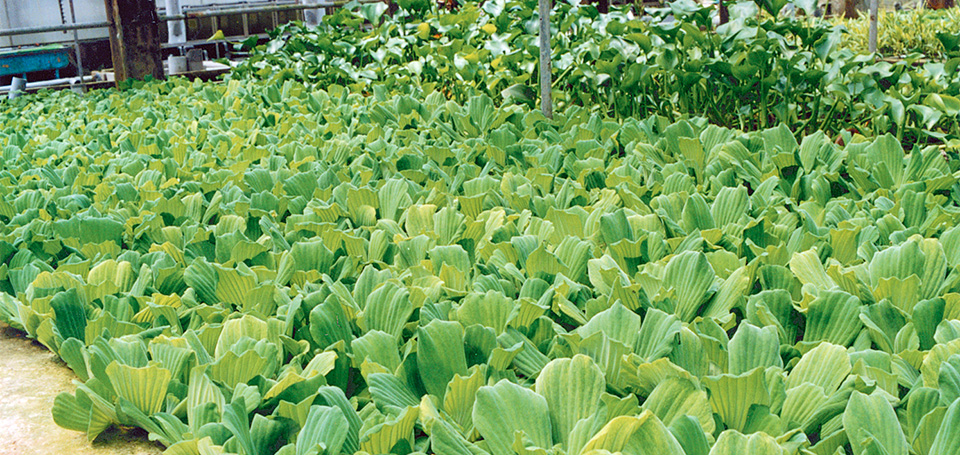
Nitrate accumulation occurs in high-density, recirculating aquaculture systems because ammonia excreted by fish is oxidized to nitrates through nitrification in the biofilter. Though nitrate is not as toxic as ammonia or nitrite, its excessive accumulation is undesirable.
Denitrification by anaerobic bacteria is a commonly used method to remove nitrates, but the complex operation requires anaerobic conditions and the addition of carbon sources to the system. Increasing the water exchange rate is another method, but it increases waste effluent, and additional energy is required if the exchange water requires heating or cooling.
Aquatic plants and hydroponics
A third common method of denitrification in warm-water aquaculture systems is to use aquatic plants or aquaponics. Water hyacinths, for example, absorb nitrates and phosphate from pond aquaculture systems. These plants have also been tested to reduce pollution levels from industrial effluents in rivers and streams.
Aquatic plants do not need much energy for denitrification, and they grow well under proper water temperature and light conditions. Hydroponics using vegetables or other valuable plants can not only accomplish denitrification, but provide an additional source of income for fish farmers.
Comparison of four plants
Aquatic plants like the water hyacinth (Eichhornia crassipes), Brazilian pennywort (Hydrocotyle leucocephala), freshwater amphibious herb Hygrophila sp., and water lettuce (Pistia stratioides) grow fast and can sometimes be grown on biofilters to remove dissolved waste nutrients from aquaculture systems. To evaluate the efficiency of these species in water treatment, the authors performed a study to evaluate their potential to remove nitrogenous nutrients from pond water.
Test system
The 2-kg plants were planted inside wooden, 2-square-meter frames set on top of an Intensive Bio-Production Korean (IBK) biofilter. The IBK system is a simple and highly efficient recirculating aquaculture system that removes suspended solids and dissolved organic matter by foam fractionation (Kim and Jo 1998).
The plants were grown for 30 days from September to October in 1999. Water temperature during this period ranged 28 to 32 degrees-C. After 30 days, plant samples were collected and freeze-dried for analysis. Crude protein, moisture, and ash of the freeze-dried plants were determined. After the analysis, nitrogen removal capacity was estimated.
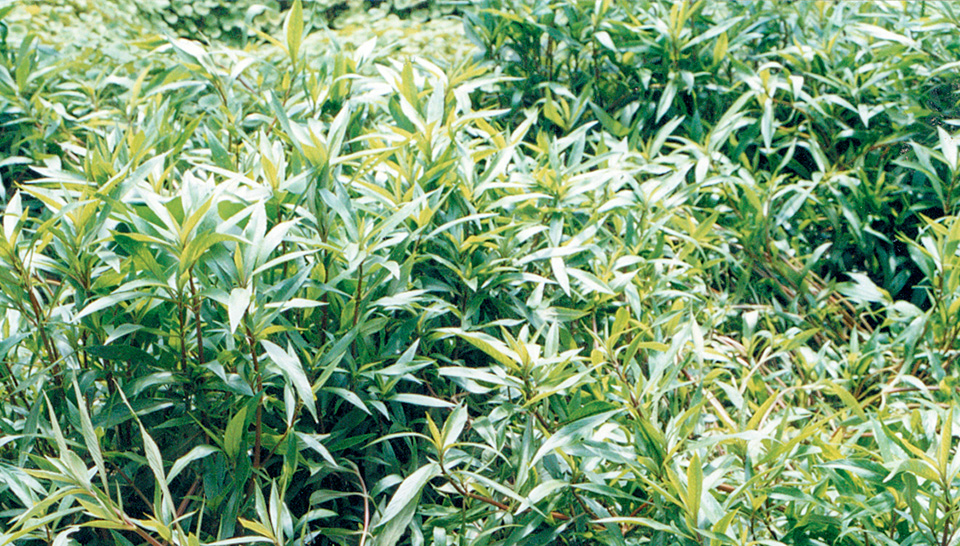
Growth
P. stratioides had the fastest growth in terms of total wet matter, but Hygrophila sp. produced the largest amount of dry matter, followed by P. stratioides, E. crassipes, and H. leucocephala (Table 1).
Jo, Removal of nitrogen by four species of aquatic plants, Table 1
| Pistia stratioides | Hygrophila sp. | Eichhornia crassipes | Hydrocotyle leucocephala | |
|---|---|---|---|---|
| Wet biomass produced (g) | 20,376 | 10,774 | 12,805 | 6,482 |
| Dry matter produced (g) | 1,796.0 (8.8%) | 2,028.3 (18.8%) | 881.8 (6.9%) | 607.8 (9.4%) |
| Protein (g) | 434.3 (24.2%) | 257.8 (12.7%) | 159.6 (18.1%) | 109.3 (18.0%) |
| Total nitrogen synthesized (g) | 69.5 | 41.2 | 25.5 | 17.5 |
| Nitrogen synthesized/m2/day (g) | 1.16 | 0.69 | 0.43 | 0.29 |
Nitrogen synthesized
In terms of total nitrogen (N) synthesized by the plants in their 2-square-meter areas, P. stratioides was by far the most efficient for denitrification among the species tested, followed by Hygrophila sp., E. crassipes, and H. leucocephala. In addition to being effective in removing nitrogenous nutrients, P. stratioides is also compact and easy to handle when overgrown plants are harvested.
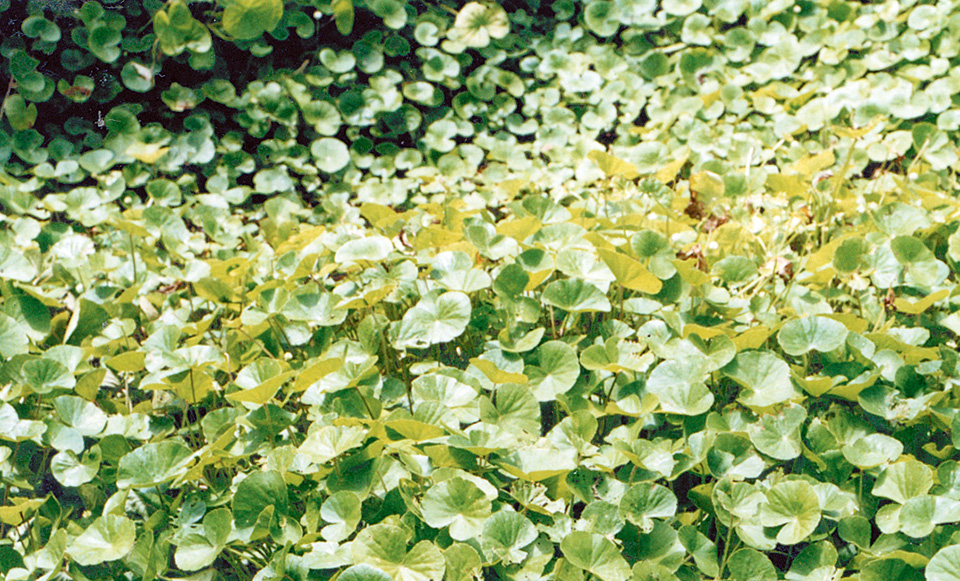
Insufficient initial biomass
In this study, initial planting was thin, and plants did not grow into a large-enough biomass for full utilization of nutrients in the water until the end of the experiment. With fully grown plants, nitrogen removal and plant production would significantly exceed the best results of 69.5 grams of nitrogen synthesis – a daily average of 1.16 grams per square meter – by P. stratioides.
Other studies have shown that when placed on IBK system biofilters, aquatic plants like H. leucocephala and E. crassipes can synthesize about 15 grams per square meter per day of nitrogenous nutrients. This figure was estimated from the daily feed ration fed to fish and the concentration of nitrogenous nutrients that remained in the system water.
Conclusion
Aquatic plants or aquaponics are commonly used in recirculating aquaculture systems to control nitrification in culture system water. In a study of four aquatic plant species, P. stratioides was the most effective for removal of inorganic nitrogenous nutrients, and is the preferred plant for denitrification in fish culture systems where the plant’s light and temperature conditions are met. Further experiments could determine the total capacity of the plants to process nitrates.
Note: Cited references are available from the last author.
(Editor’s Note: This article was originally published in the June 2002 print edition of the Global Aquaculture Advocate.)
Now that you've reached the end of the article ...
… please consider supporting GSA’s mission to advance responsible seafood practices through education, advocacy and third-party assurances. The Advocate aims to document the evolution of responsible seafood practices and share the expansive knowledge of our vast network of contributors.
By becoming a Global Seafood Alliance member, you’re ensuring that all of the pre-competitive work we do through member benefits, resources and events can continue. Individual membership costs just $50 a year.
Not a GSA member? Join us.
Authors
-
Jae-Yoon Jo, Ph.D.
Department of Aquaculture
Pukyong National University
Nam-gu, Pusan 608-737, Korea -
Jin-Seok Ma, M.S.
Department of Aquaculture
Pukyong National University
Nam-gu, Pusan 608-737, Korea -
In-Bae Kim, Ph.D.
Department of Aquaculture
Pukyong National University
Nam-gu, Pusan 608-737, Korea[109,111,99,46,108,105,97,109,116,111,104,64,109,105,107,101,97,98,110,105]
Tagged With
Related Posts
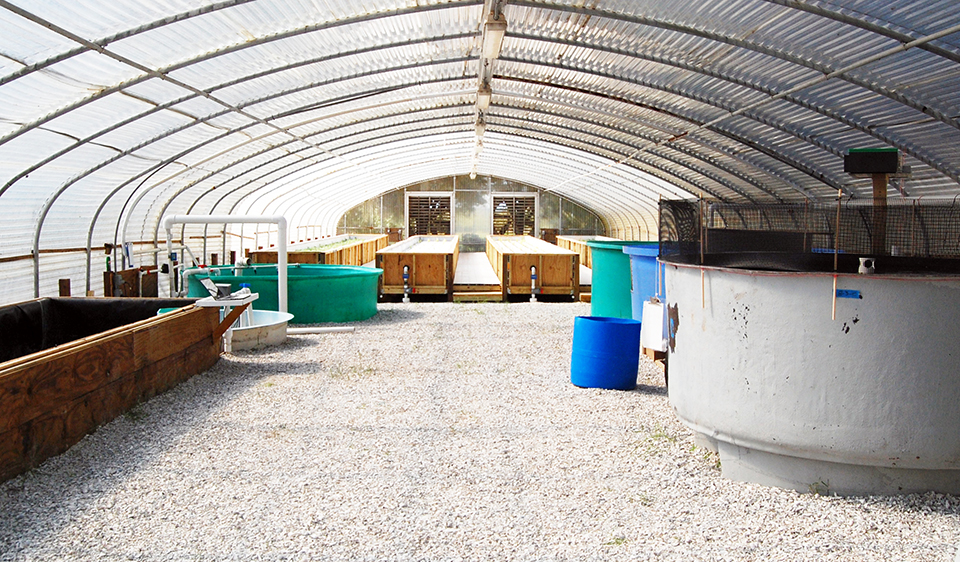
Responsibility
Aquaponic system produces red drum, saltwater vegetable species
A project in Florida is studying the feasibility of a marine aquaponic system containing red drum and two native saltwater species. Water that exits the plant raceways is filtered and recirculated to the fish tanks. In tests, sea purslane grew rapidly, while saltwort took almost four months to adapt. The fish exhibited high survival and achieved a feed-conversion ratio of 1.2.
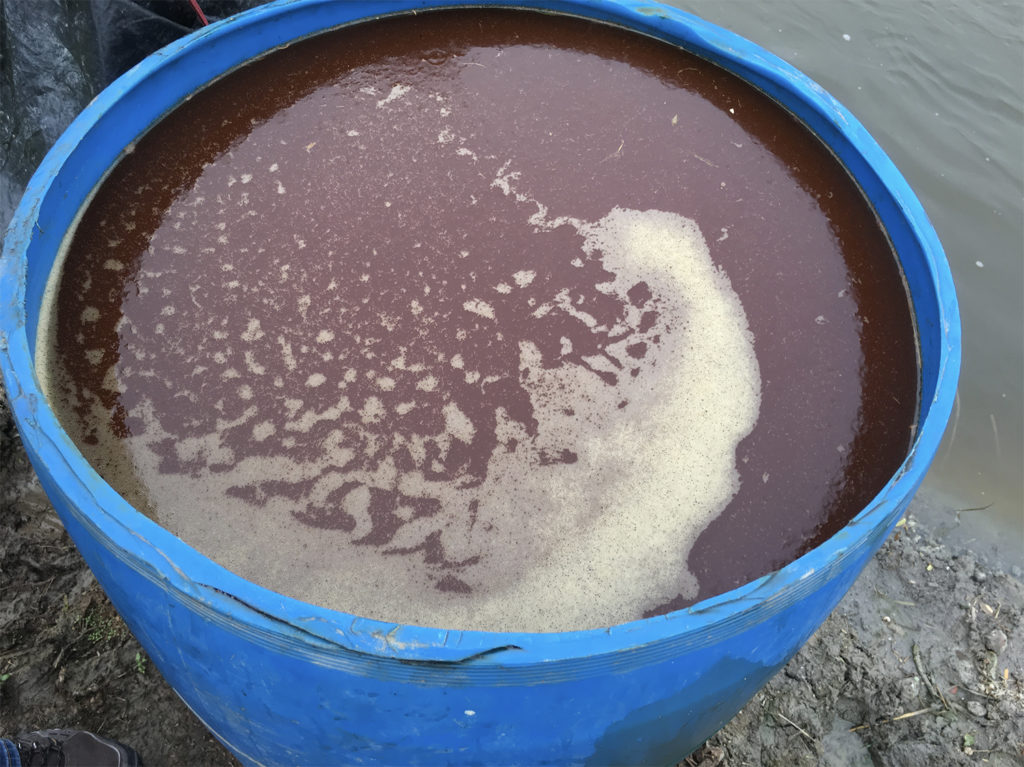
Responsibility
Bacterial amendments in shrimp grow-out ponds
Pond microbial communities are a critical and often overlooked component of aquaculture ecosystems. Bacterial amendments like probiotics provide significant support to shrimp farmers around the world.
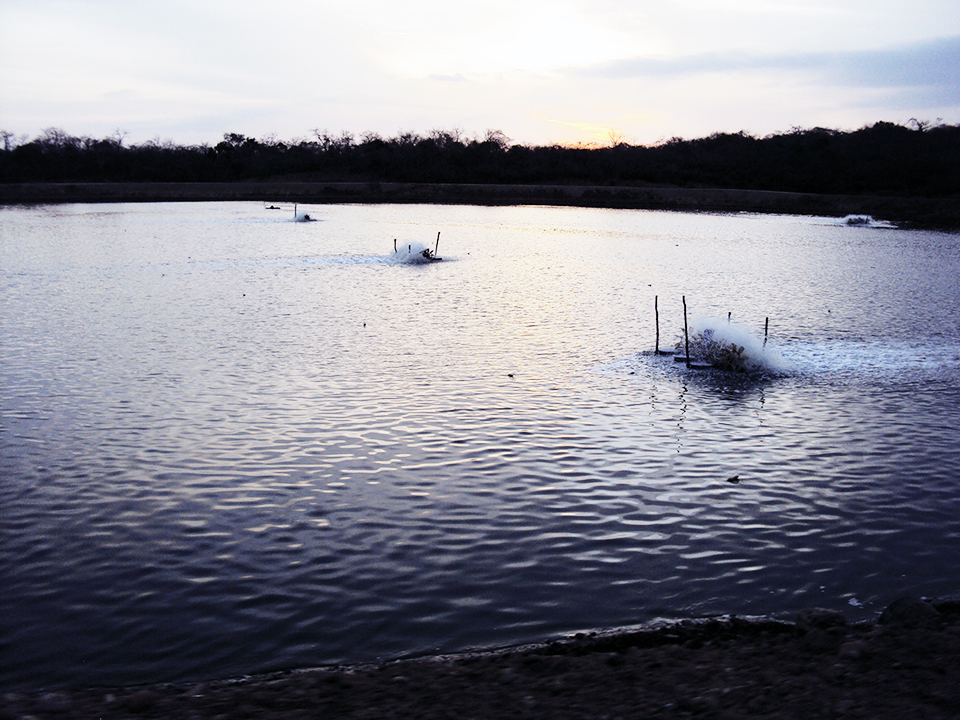
Health & Welfare
Beneficial microbes and pathogen control
A range of alternative products is available to improve animal health and water quality, and control pathogen loads. Beneficial microbes produce antimicrobial compounds and suppress pathogen proliferation.
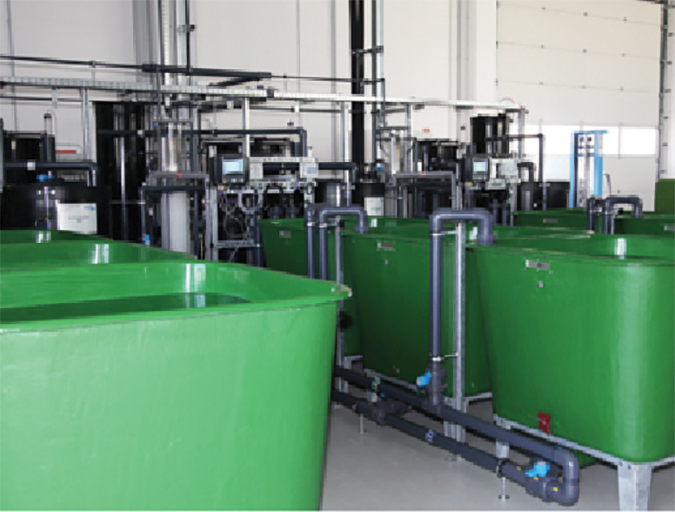
Health & Welfare
Biofilter inoculation in recirculating aquaculture systems
Biological filters are essential parts of recirculating aquaculture systems that transform toxic fish compounds such as ammonium and nitrite into less-harmful nitrate. The authors tested the convenience and efficiency of three methods for the initial inoculation of aerobic biofilters.



